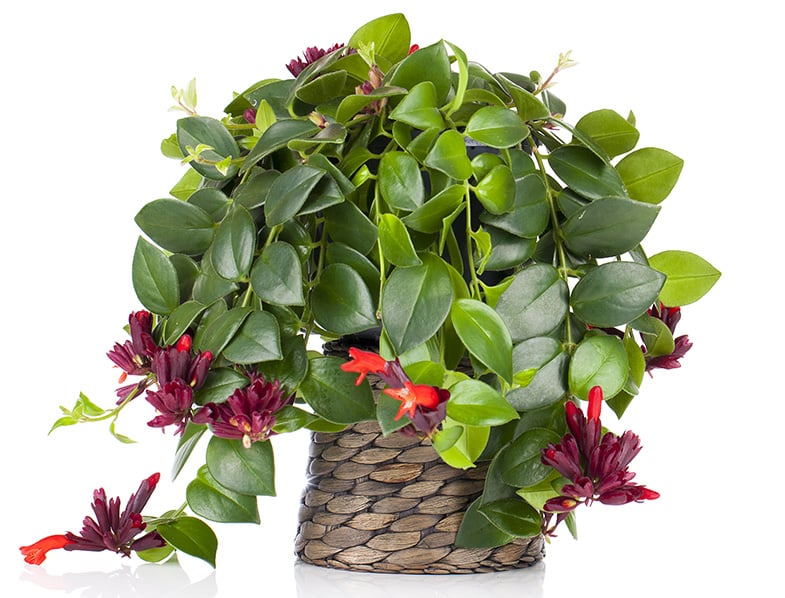Ficus benjamina 'Starlight'
Light
Your Ficus will need a location which is fairly bright in order for it to do well indoors. Some shade is okay,
but you do have to be careful as if the light levels are too low then
in a short time your Weeping Fig will tell you it's unhappy by shedding
leaves. Some direct sunshine will be fine, but midday sun could be too
much for your plant, so early morning or late afternoon sunshine is
best.
Watering
Most Ficus plants are normally tolerant of occasional watering mistakes,
so giving too much or too little from time to time will not usually do
any long term harm. For a thriving happy plant you will want to get it
right though and that means keeping the soil moist for much of the time.
In other words, the potting soil shouldn't be a soaking, sodden mess
and equally, it shouldn't resemble bone dried dust.
Humidity
The humidity in your home or office
isn't overly important. Insufficient watering will mean the humidity
needs to be higher and too much watering will mean low humidity levels
are needed to decrease the chances of your plant rotting.
Clearly the best option, therefore, is to be able to ignore humidity
as a care requirement completely and to be able to do that, you just
need to water it correctly by following the watering instructions above.

Feeding
The leaves on your Weeping Fig might look small, but there is a lot of them, which means it can be quite a heavy feeder.
To keep yours happy with lush green leaves, look to feed up to once
every month during the growing seasons, none needed in Winter.
Temperature
The average temperature in the standard home or office is brilliant.
If you're comfortable temperature wise, then so is your Ficus. For
active growth to occur the temperature needs to be at or above 15°C (59°F). Always keep your plant out of cold draughts.
These houseplants love sharing your living spaces both for the light and temperatures range
Repotting
Very young plants need to be repotted every year or so, this is
because they can grow quite fast and will need space for their roots to
establish. Newly brought plants from a store which are a good size will
most likely be mature enough to need less frequent repotting and so
you'll only need to repot every two or three years.
Plants older than this will only need very occasion repotting, otherwise you risk heavy leaf fall.
Very mature Weeping Fig's which are heavy to move, are best off not
being repotted at all (unless you feel it's essential). Instead, they
benefit more from scrapping off the top inch or two of soil and top
dressing with fresh compost every couple of years.
Propagation
If the stems are quite young, supple and "new" opposed to older more woody ones, then you can propagate the Weeping Fig through stem cuttings.
Cut a stem matching the above criteria, which is an inch or two long
and then remove some of the leaves from this cutting if there's a lot.
Two or three remaining leaves is ample to get the new plant going. Push
the cutting a few centimeters into fresh potting soil and keep warm and
the soil moist.
Use a rooting hormone to increase your chances and if possible keep
the compost warm by providing bottom heat, which can be achieved by
using a heated propagator. New leaf buds should start to form after a
month or so, it may take longer in some instances but providing the stem
is still "alive" the time it takes is not something to be concerned
about. To create a "bushy" look, take several cuttings and grow them together as "one" plant.
Speed of Growth
A Ficus which has all its needs adequately met will grow moderately fast.
This basically means it grows quick enough for you to notice it
changing in shape and size, but not so quickly that it constantly
outgrows the surrounding available space.
Height / Spread
The maximum height you can expect in an indoor Ficus Benjamina is 2m / 6ft.
They do not reach this height quickly so if you've brought a small
plant initially it will be many years before it reaches this tree-like
size. That could be good news if you bought a small plant and want to
keep it that way.
If on the other hand you want something tall quickly, buy a large
Ficus to start with. Width wise, most Weeping Figs tend to be tall and
slender rather than wide and spreading and so won't normally be wider
than 0.5m / 50cm at the very most.

































